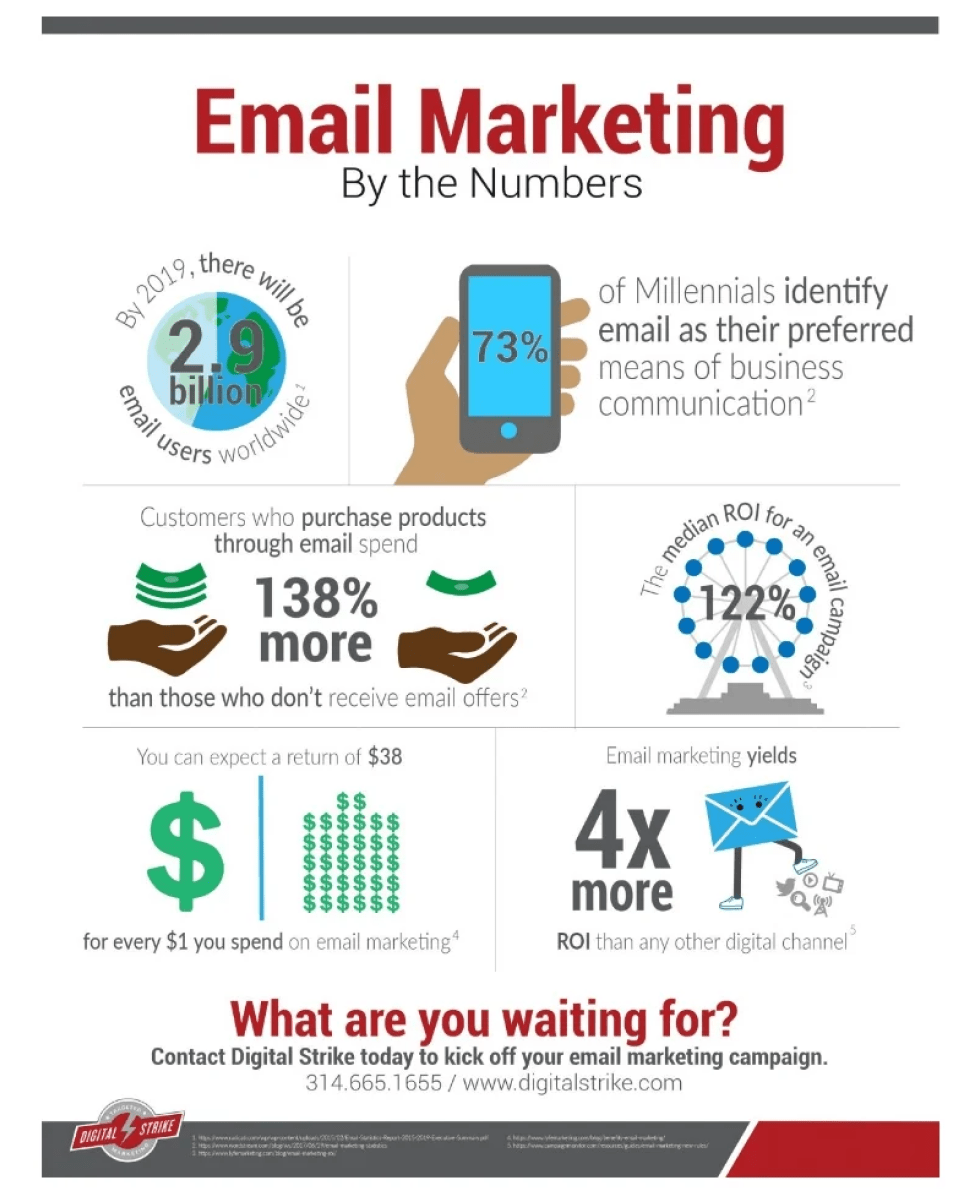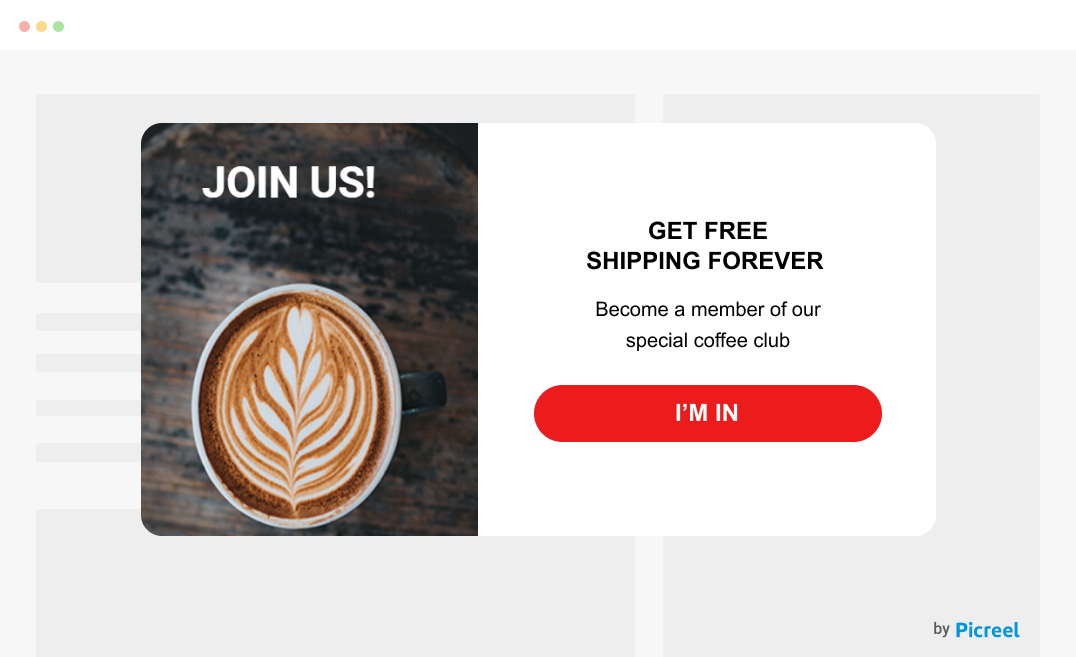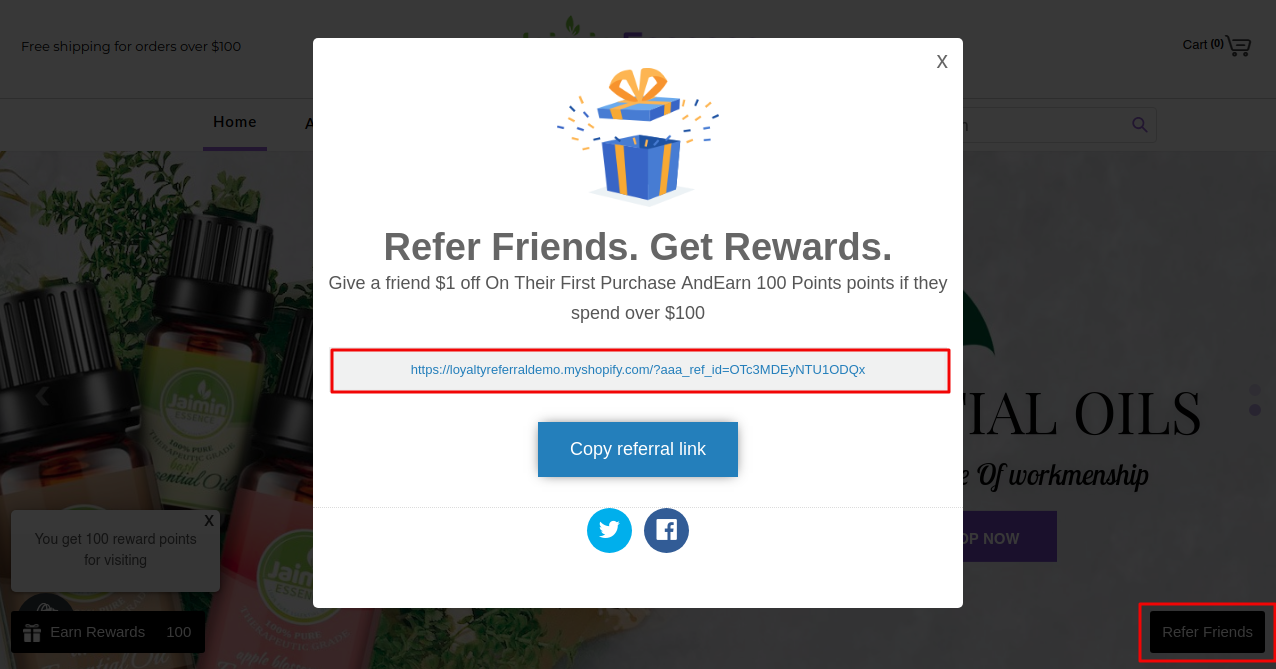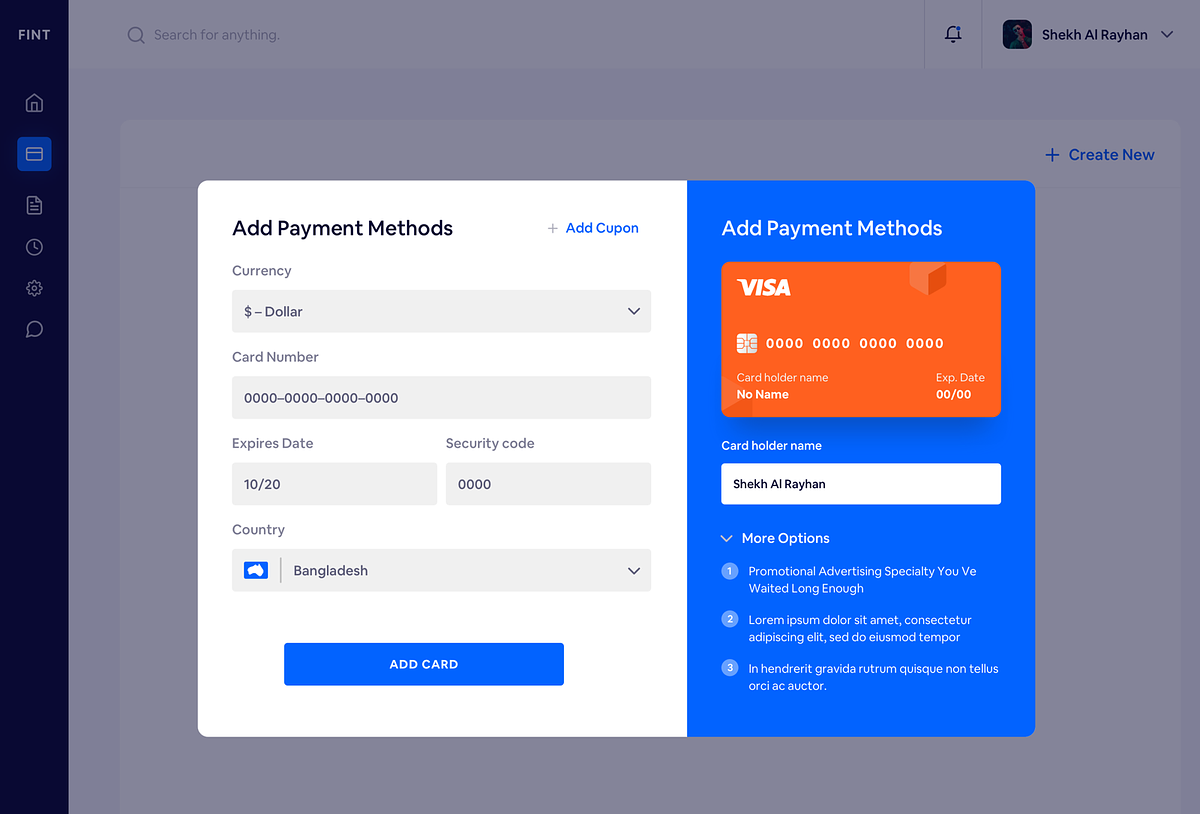
Wondering how to increase e-commerce sales in today’s fiercely competitive market? You’re not alone.
As the digital landscape evolves, understanding and implementing cutting-edge strategies is crucial for staying ahead.
So, here I have created a blog post on key tactics to drive your e-commerce sales skyward. In this, we’ll cover everything from leveraging social media for enhanced engagement and optimizing your site for a frictionless shopping experience to harnessing the power of personalization and data analytics.
Whether launching an online store or aiming to grow an existing one, these are your ticket to achieving remarkable growth and success in the e-commerce world.
Let’s get started!
How to Increase Sales on E-Commerce Website
Here are some pro tips and tricks to increase and improve e-commerce sales to get that desired e-commerce boost
1. Optimize Your Website for Mobile Users
With the surge in mobile commerce, it’s crucial to optimize your e-commerce website for mobile users. This involves creating a responsive design that adapts to different screen sizes, improving site speed to reduce bounce rates, and simplifying the navigation to ensure that customers can easily find and purchase products.
Mobile optimization also includes streamlining the checkout process to reduce cart abandonment rates, which are typically higher on mobile devices.
How to Mobile-Optimize Your Website for Better Sales
- Streamline navigation to enhance the mobile user experience effectively
- Optimize all images to ensure rapid loading on mobile devices
- Employ responsive web design for seamless viewing on various screens
- Simplify the checkout process to minimize steps and improve conversion
- Utilize less intrusive mobile-friendly pop-ups to engage without annoying
- Offer multiple seamless payment options for convenience and faster transactions
- Improve site search functionality with efficient filtering for effortless browsing
- Prioritize website loading speed to significantly decrease mobile bounce rates
- Create clear and visible call-to-action buttons for better user guidance
- Provide exclusive deals for mobile users to incentivize app downloads
Given that over 61% of global internet traffic now comes from mobile devices, and with projections indicating that a significant portion of e-commerce sales will be conducted via mobile in the coming years, neglecting ecommerce website for mobiles could result in a substantial loss of sales.
Pro Tip: Leverage accelerated mobile pages (AMP) and prioritize a mobile-first design approach to enhance loading speeds and user experience on mobile devices.
2. Implement a Loyalty Program

Loyalty programs are a powerful tool for e-commerce businesses, designed to reward repeat customers and encourage ongoing patronage. By offering points, discounts, early access to products, or exclusive deals, loyalty programs not only incentivize additional purchases but also help build a community around your brand.
Studies have shown that customers engaged in loyalty programs tend to spend up to 18% more, highlighting the direct impact of these programs on sales growth.
So, implementing a loyalty program can help e-commerce sites differentiate themselves in a crowded market, foster customer loyalty, and drive repeat business, which is often more cost-effective than acquiring new customers.
Pro Tip: Customize loyalty rewards based on customer purchase history and interactions to increase engagement and perceived value.
3. Use High-Quality Images and Videos for Product Listings
In the absence of physical interaction with products, high-quality images, and videos become the cornerstone of e-commerce success. They serve as the primary tool for customers to assess products, making it essential to use clear, detailed visuals that accurately represent the items.
How to Grow Sales With Multimedia Elements
- Use professional lighting for vibrant product images.
- Highlight features with close-up shots and angles.
- Employ models to showcase product scale and use.
- Integrate 360-degree views for immersive experiences.
- Utilize high-definition videos for real-life demonstrations.
- Optimize image sizes for quick loading times.
- Leverage customer-generated content for authenticity and trust.
- Employ consistent styling for brand recognition.
- Utilize infographics for complex product details.
- Include before-and-after images for effectiveness proof.
In fact, listings enhanced with high-quality visuals have been shown to increase conversion rates by up to 30%, underscoring the importance of investing in professional photography and videography.
Pro Tip: Integrate 360-degree imagery and product videos to give a comprehensive view, boosting consumer confidence in their purchase decisions.
4. Offer Limited-Time Promotions and Discounts

Limited-time promotions and discounts are a dynamic strategy to boost e-commerce sales by creating a sense of urgency among consumers. By offering short-period deals, businesses can encourage customers to act quickly to take advantage of the savings, leading to a spike in sales.
This approach is particularly effective for clearing out old inventory, attracting new customers, and rewarding indecisive buyers.
Flash sales, for instance, can increase transaction volumes by up to 35% during the promotional period. Moreover, integrating these promotions with social media campaigns can amplify their reach and effectiveness, creating a buzz that attracts even more potential customers.
Pro Tip: Enhance the impact of promotions through exclusive social media campaigns to broaden reach and engagement.
5. Enhance Your Website’s SEO
A robust search engine optimization (SEO) strategy is essential for driving organic traffic to your e-commerce site and improving its visibility in search engine results.
By optimizing your site’s content, structure, and on-page elements like meta tags, descriptions, and keywords, you can significantly increase your site’s ranking on search engine results pages (SERPs). Besides, focusing on long-tail keywords that are specific to your products and industry can attract a more targeted audience, which is more likely to convert into sales.
Given that websites on the first page of Google receive nearly 92% of web traffic, the importance of SEO cannot be overstated.
How to Use SEO to Grow E-Commerce Sales
- Optimize product titles with main keywords.
- Use relevant, high-volume keywords in descriptions.
- Enhance meta descriptions for better click-through rates.
- Implement structured data for rich snippets.
- Create engaging, keyword-rich product content.
- Optimize site speed for better user experience.
- Build high-quality backlinks to increase authority.
- Utilize social media signals and content.
- Optimize images with descriptive alt tags.
- Leverage customer reviews for fresh, keyword-rich content.
Pro Tip: Target long-tail keywords and optimize for voice search queries to capture a more engaged audience.
Also Read: How to Increase Average Order Value: 10 Strategies That Work
6. Utilize Email Marketing Effectively

Email marketing is still one of the most effective channels for engaging with customers and driving e-commerce sales. It allows businesses to send personalized content, promotions, and updates directly to their customer base, fostering a sense of connection and encouraging repeat purchases.
Segmenting your email list based on customer behaviors and preferences can significantly enhance the effectiveness of your campaigns, delivering 6 times higher transaction rates for personalized emails.
This strategy can help in announcing new products, offering exclusive discounts, and keeping your brand top-of-mind.
Pro Tip: Segment your email list to deliver more personalized and relevant content, significantly increasing engagement and conversion rates.
7. Engage With Customers on Social Media
Social media platforms offer unparalleled opportunities to engage directly with customers, build brand loyalty, and drive sales. Engaging with customers on social media not only enhances brand visibility but also provides valuable insights into customer preferences and behavior.
Encouraging customers to share their experiences and photos with your products can act as social proof, attracting new customers and building trust.
Brands that actively engage with their audience on social media have been shown to enjoy higher loyalty rates, with a significant number of consumers feeling more connected to brands they can interact with online. This strategy is essential for building a loyal customer base and driving organic growth.
How to Engage on Social Media to Grow E-Commerce Sales
- Use targeted ads
- Offer exclusive discounts
- Leverage influencer partnerships
- Implement SEO strategies
- Host live sessions
- Share user-generated content
- Run social contests
- Engage with followers
- Optimize for mobile
- Collaborate with brands
Pro Tip: Leverage user-generated content and engage in social listening to enhance engagement and tailor your social media strategy to meet customer expectations.
8. Offer Free Shipping

Offering free shipping is a powerful incentive for customers to complete a purchase. Shipping costs are often cited as the primary reason for cart abandonment in online shopping. By eliminating this barrier, businesses can significantly improve their conversion rates.
Besides, free shipping can be strategically applied, such as setting a minimum order value to increase the average order value or offering it as a limited-time promotion to boost sales during specific periods.
In fact, studies have shown that orders with free shipping average around 30% higher in value than those that charge for delivery.
Pro Tip: Strategically use free shipping thresholds to increase average order values while still providing value to the customer.
9. Use Retargeting Ads

(Image Source: Creatopy)
Retargeting ads are a critical tool for converting website visitors into buyers. By targeting ads at individuals who have previously visited your site but did not make a purchase, you can keep your brand at the forefront of their minds and encourage them to return.
Retargeting uses cookies to track users across the web, allowing for personalized ad experiences that reflect the products they showed interest in. It can also be fine-tuned based on user behavior, such as targeting cart abandoners with the items they left behind, making it a versatile tool for boosting e-commerce sales.
Pro Tip: Tailor retargeting campaigns with specific product recommendations and special offers to maximize conversion rates.
10. Incorporate Customer Reviews and Testimonials
Customer reviews and testimonials play a crucial role in building trust and credibility for your e-commerce business. The vast majority of online shoppers read reviews before making a purchase decision, making it essential to incorporate genuine customer feedback on your website.
Displaying reviews prominently can also improve SEO and increase the likelihood of conversions by providing social proof to potential buyers.
Encouraging customers to leave reviews by offering incentives or simply asking for their feedback post-purchase can help accumulate a substantial number of reviews, further enhancing your product’s appeal.
Pro Tip: Implement automated follow-up emails asking customers to review their purchase, making it easy and convenient for them to provide feedback.
Also Read: Shopify's Marketing Automation: Simplified Strategies
11. Use Content Marketing to Provide Value
Content marketing is a strategic approach focused on creating and distributing valuable, relevant, and consistent content to attract and retain a clearly defined audience — and, ultimately, to drive profitable customer action.
You can engage potential customers at every stage of the buyer’s journey by providing useful content related to your products or industry. Whether through blog posts, videos, infographics, or guides, content marketing can establish your brand as a thought leader in your niche, improving brand loyalty and driving traffic to your site.
Besides, content that addresses common questions and challenges can improve your SEO, making it easier for customers to find you online.
How to Use Content Marketing to Grow E-Commerce Sales
- Create engaging product descriptions to highlight unique features.
- Utilize SEO strategies in content to improve search visibility.
- Publish regular blog posts related to your products or industry.
- Leverage customer reviews and testimonials in marketing materials.
- Offer valuable e-books or guides in exchange for email signups.
- Use social media to share content and interact with customers.
- Create tutorial videos demonstrating your products in action.
- Partner with influencers to expand reach and credibility.
- Run contests or giveaways that encourage content sharing.
- Send targeted email newsletters with offers and valuable content.
Pro Tip: Leverage SEO research to identify topics that your target audience is searching for and align your content strategy to answer those queries.
Also Read: How to Personalize Your Popups With Dynamic Content From Your Site
12. Optimize the Checkout Process
A streamlined checkout process is critical for minimizing cart abandonment and maximizing conversions. This involves simplifying the number of steps to purchase, offering multiple payment options, and clearly displaying shipping costs and delivery times.
Ensuring that your checkout is secure and trustworthy is also crucial, as concerns over payment security are significant barriers to online shopping. Businesses that have optimized their checkout process report a significant decrease in cart abandonment and an increase in overall sales.
Pro Tip: Implement a progress indicator during the checkout process to inform customers how many steps are left, reducing frustration and abandonment.
Also Read: Best 7 Abandoned Cart Apps For Shopify To Boost Conversions
13. Implement a Referral Program

(Image Source: AAAEcommerce)
Referral programs incentivize existing customers to refer new ones by offering them rewards, such as discounts, free products, or other perks. This marketing strategy leverages the trust and relationships that customers have with their friends and family, making it a highly effective way to acquire new customers.
People are more likely to trust recommendations from people they know, making referrals a powerful tool for e-commerce growth.
Tips to Use Referral Program to Grow E-Commerce Sales
- Offer attractive incentives for both referrers and their friends.
- Make the referral process simple, quick, and easily accessible.
- Use social media platforms to promote and share referral links.
- Track and analyze referral data to understand customer behavior.
- Personalize referral messages for a more authentic engagement approach.
- Leverage email marketing to remind customers of referral benefits.
- Provide exceptional customer service to encourage positive word-of-mouth.
- Create a dedicated referral page with clear instructions and benefits.
- Utilize customer feedback to improve the referral program continuously.
- Celebrate and share success stories to inspire more referrals.
Pro Tip: Make sharing as easy as possible by providing customers with simple tools and options for referring your business to others.
14. Utilize Influencer Marketing
Influencer marketing can effectively reach and engage potential customers, particularly in markets where trust and authenticity are paramount. Choosing the right influencers is key, as their audience should align with your target market.
Influencer marketing can take various forms, from sponsored posts and reviews to collaborations and endorsements. The authenticity and reach of influencers can significantly amplify your brand’s message, driving both awareness and sales.
Campaigns with influencers have been shown to yield high ROI, making this an attractive strategy for e-commerce brands.
Pro Tip: Focus on building long-term relationships with influencers whose values align with your brand for more authentic and impactful promotions.
Also Read: How to Increase Average Order Value: 10 Strategies That Work
15. Offer Multiple Payment Options

(Image Source: Dribbble)
Offering a variety of payment options can significantly enhance the customer experience by providing the flexibility to choose their preferred payment method, including credit cards, PayPal, Afterpay, and even cryptocurrency in some cases.
This flexibility can reduce cart abandonment rates, as customers are less likely to leave if they can pay their way.
Statistically, businesses that offer four or more payment methods have seen a 7 times increase in sales compared to those offering just one option.
Pro Tip: Regularly review your payment options to include emerging and popular methods, ensuring you stay relevant to consumer trends and preferences.
16. Use Live Chat Support
Live chat support immediately assists customers, addressing their queries and concerns in real time. This level of instant support significantly enhances the shopping experience, potentially increasing conversion rates by keeping customers engaged and informed.
Live chat has become increasingly important, with a reported 20% increase in conversion rates when customers use live chat prior to making a purchase.
Besides, offering proactive live chat support can preemptively solve problems and answer questions, further improving the likelihood of a sale.
How Live Chat Benefits E-Commerce Sales Growth
- Instant customer support boosts confidence, leading to increased sales conversions.
- Personalized shopping experiences enhance customer satisfaction and loyalty.
- Quick problem resolution improves the shopping experience and encourages repeat business.
- Real-time chat offers upselling opportunities, increasing average order value.
- Live chat reduces cart abandonment by addressing concerns immediately.
- Proactive chat invitations can capture hesitant shoppers, boosting sales.
- Gathering customer feedback through chat improves product offerings and user experience.
- 24/7 availability ensures global customer engagement and expanding market reach.
- Automated chatbots handle basic inquiries, freeing agents for complex issues.
- Live chat analytics provide insights for targeted marketing and sales strategies.
Pro Tip: Utilize chatbots for basic inquiries outside of business hours to ensure customers always have access to immediate support.
17. Personalize the Shopping Experience
Personalization can transform the shopping experience by making it more relevant and engaging for each customer. This can range from personalized product recommendations based on past browsing and purchase history to customized email marketing campaigns.
Studies have shown that personalized experiences can lead to a 20% increase in sales, as they make customers feel understood and valued, increasing their likelihood to convert.
How to Use Personalization to Increase E-Commerce Sales
- Tailor Product Recommendations: Tailor product recommendations based on user browsing and purchase history.
- Customize Emails: Customize email marketing with the recipient’s name, interests, and location.
- Personalized Discounts: Offer personalized discounts and promotions to loyal or new customers.
- Data-Driven Shopping: Use customer data to create personalized shopping experiences online.
- Chatbot Assistance: Implement chatbots for personalized assistance and product suggestions in real time.
- Retargeting Ads: Utilize retargeting ads to remind visitors of previously viewed products.
- Analyze Feedback: Analyze customer feedback to improve and personalize future shopping experiences.
- Personalized Navigation: Personalize the homepage and navigation based on the user’s preferences and behavior.
Pro Tip: Leverage machine learning algorithms and artificial intelligence to refine your personalization strategies over time, offering increasingly relevant recommendations to your customers.
18. Conduct A/B Testing on Your Website
A/B testing, or split testing, involves comparing two versions of a web page to see which performs better in terms of converting visitors into customers.
By making data-driven decisions based on A/B testing results, businesses can significantly improve their website’s user experience and conversion rate.
For instance, companies that consistently A/B test their landing pages can see up to a 30% improvement in conversion rates. A/B testing allows for continuous improvement and helps in understanding what resonates best with your target audience.
Pro Tip: Start with testing elements that directly influence conversions, such as call-to-action buttons and checkout process steps, for immediate impact.
19. Create and Promote Gift Guides
Gift guides are curated lists of products designed to simplify the gift-giving process for customers. Especially effective during holiday seasons or special events, gift guides can boost visibility for certain products and encourage larger purchases.
By segmenting gift guides into categories (e.g., “For Him,” “For Her,” “Under $50”), you can cater to a wide range of customers and their needs.
Promoting these guides through email marketing, social media, and on your website can increase traffic and sales.
Pro Tip: Utilize customer data to personalize gift guide suggestions, increasing their relevance and effectiveness.
20. Use Data Analytics to Understand Customer Behavior
Data analytics provides critical insights into customer behavior, preferences, and purchasing patterns, enabling businesses to make informed decisions about their marketing strategies, product offerings, and customer experience improvements.
By analyzing data, e-commerce businesses can identify trends, predict customer needs, and tailor their approach to meet those needs more effectively.
For example, businesses that leverage analytics for customer segmentation and targeted marketing can see a significant increase in sales.
Pro Tip: Regularly analyze customer feedback and behavior patterns to adjust your offerings and marketing strategies dynamically.
21. Implement an Affiliate Marketing Program
Affiliate marketing involves partnering with individuals or companies (affiliates) to promote your products in exchange for a commission on sales generated through their referrals. One effective way to leverage this is to set up affiliate links, which affiliates can share with their audience to drive traffic directly to your products.
This performance-based marketing strategy can extend your brand’s reach, tapping into the affiliates’ audience base. It’s a cost-effective way to increase sales, as you only pay for actual conversions.
In fact, businesses utilizing affiliate marketing achieve a higher return on investment. Affiliates generate over 16% of all online orders, and 31% of web publishers say affiliate marketing is a top revenue source.
How to Use Affiliate Marketing to Grow E-Commerce Sales
- Choose affiliates that align with your brand and product values.
- Utilize affiliate tracking software to monitor sales and performance.
- Offer competitive commissions to attract and retain top affiliates.
- Provide affiliates with high-quality promotional materials and resources.
- Engage in regular communication with affiliates to foster relationships.
- Use data and analytics to optimize affiliate marketing strategies.
- Implement a tiered commission structure to reward top performers.
- Leverage social media influencers as affiliates to expand reach.
- Create exclusive affiliate promotions and discounts to drive sales.
- Monitor affiliate marketing trends and adapt strategies accordingly.
Pro Tip: Use tracking tools to measure the success of affiliate partnerships and continuously optimize your program based on performance data.
Unleashing E-Commerce Growth With Smart Tools and Strategies
Growing e-commerce sales is akin to crafting a fine art piece; it requires patience, innovation, and strategic execution. The journey from attracting visitors to converting them into loyal customers is both challenging and rewarding. However, you can always employ the strategies discussed above and navigate the complex e-commerce landscape with greater ease and efficiency.
Besides, you can use smart tools like Picreel that offer a powerful marketing advantage. They capture visitors’ attention through targeted offers and interactive website pop-ups, significantly increasing conversion rates and ensuring that no potential sale slips through the cracks.
Learn More About How to Boose E-Commerce Sales
How do I attract people to my e-commerce site?
Attracting people to your e-commerce site involves a combination of SEO strategies, engaging content creation, social media marketing, and paid advertising campaigns. Utilize SEO to improve your site’s visibility in search engine results. Create valuable content that resonates with your target audience. Leverage social media platforms to reach a broader audience and engage with potential customers. Implementing targeted ads on Google, Facebook, and Instagram can also drive traffic to your site.
What are some mistakes to avoid when trying to increase e-commerce sales?
Avoiding common mistakes can significantly enhance e-commerce sales. These mistakes include ignoring mobile users, providing limited payment options, lacking a clear value proposition, neglecting customer service, and underestimating the power of SEO. Ensure your site is mobile-friendly, offers a variety of payment methods, clearly communicates your unique selling points, provides exceptional customer service, and is optimized for search engines to improve visibility and attract more customers.
Also Read: B2B Conversion Tracking Mistakes To Avoid
My cart abandonment rate is high. How can I fix that?
Reducing a high cart abandonment rate involves several strategies. Simplify the checkout process, offer multiple payment options, include clear shipping information and costs upfront, and provide customer support during checkout. Consider implementing exit-intent popups offering discounts or free shipping to encourage customers to complete their purchases. Additionally, follow up with abandoned cart emails to remind customers of their incomplete purchase and possibly offer a small incentive to return.
Also Read: 10 Effective Shopping Cart Abandonment Solutions That Increase Sales
Do customer reviews and testimonials really make a difference in sales?
Yes, customer reviews and testimonials significantly impact sales. They provide social proof, build trust, and influence purchasing decisions. Positive reviews can enhance your brand’s credibility and reassure potential buyers about the quality of your products or services. Encourage satisfied customers to leave reviews and feature them prominently on your site and product pages. This transparency can lead to increased customer confidence and higher conversion rates.
FREE. All Features. FOREVER!
Try our Forever FREE account with all premium features!







